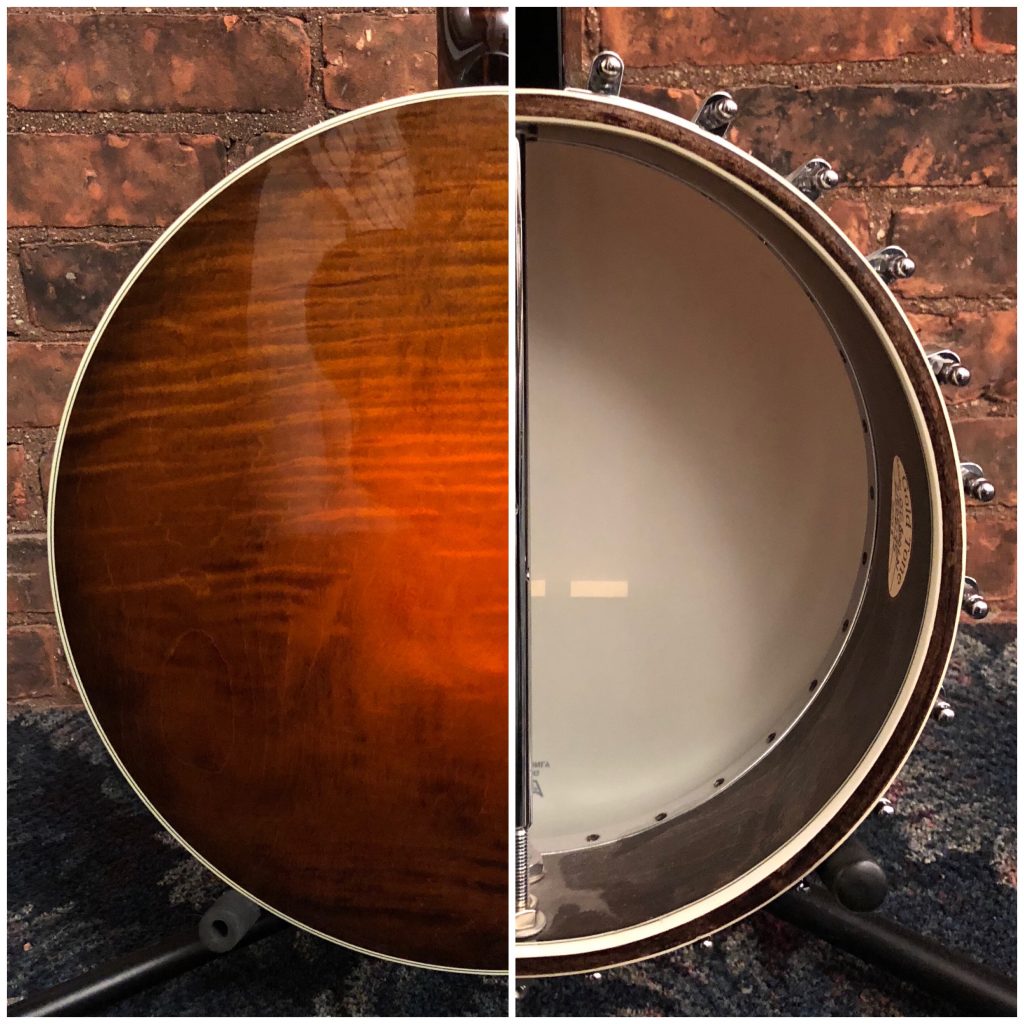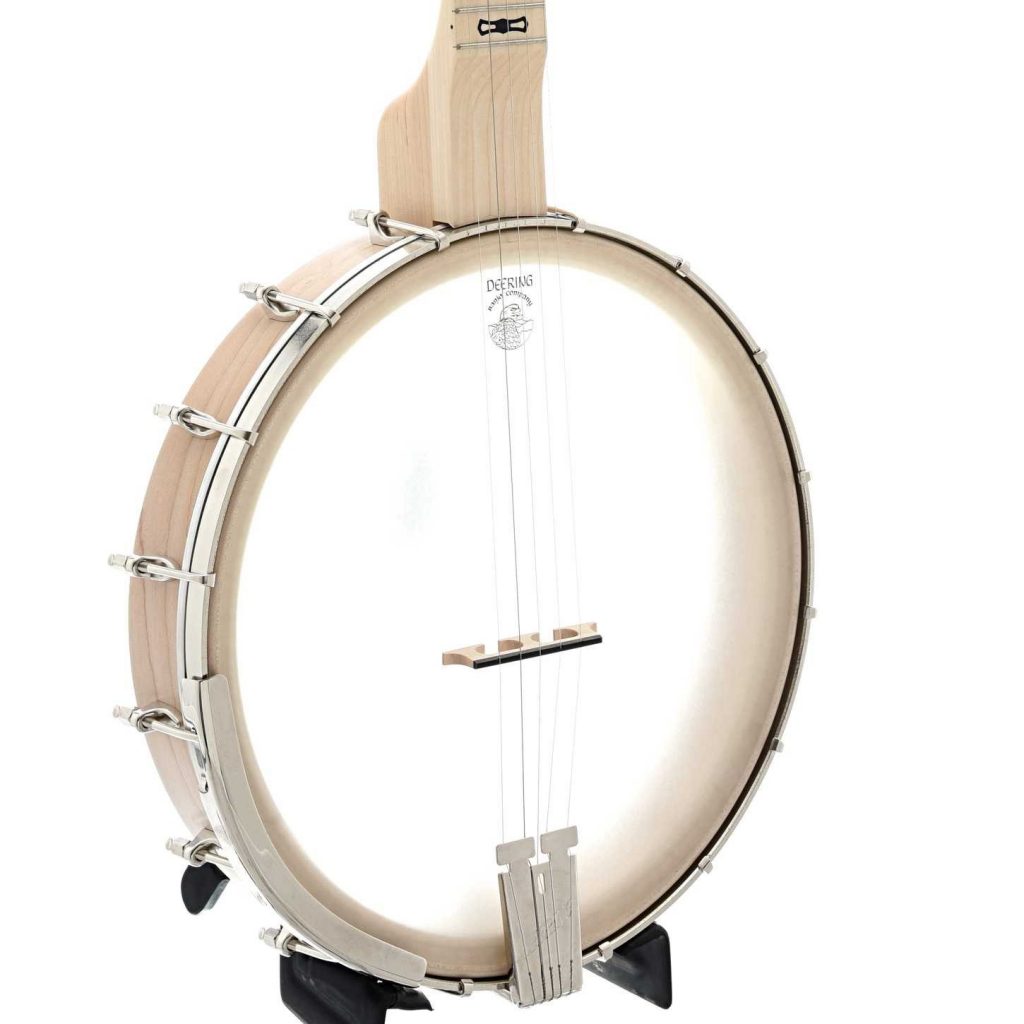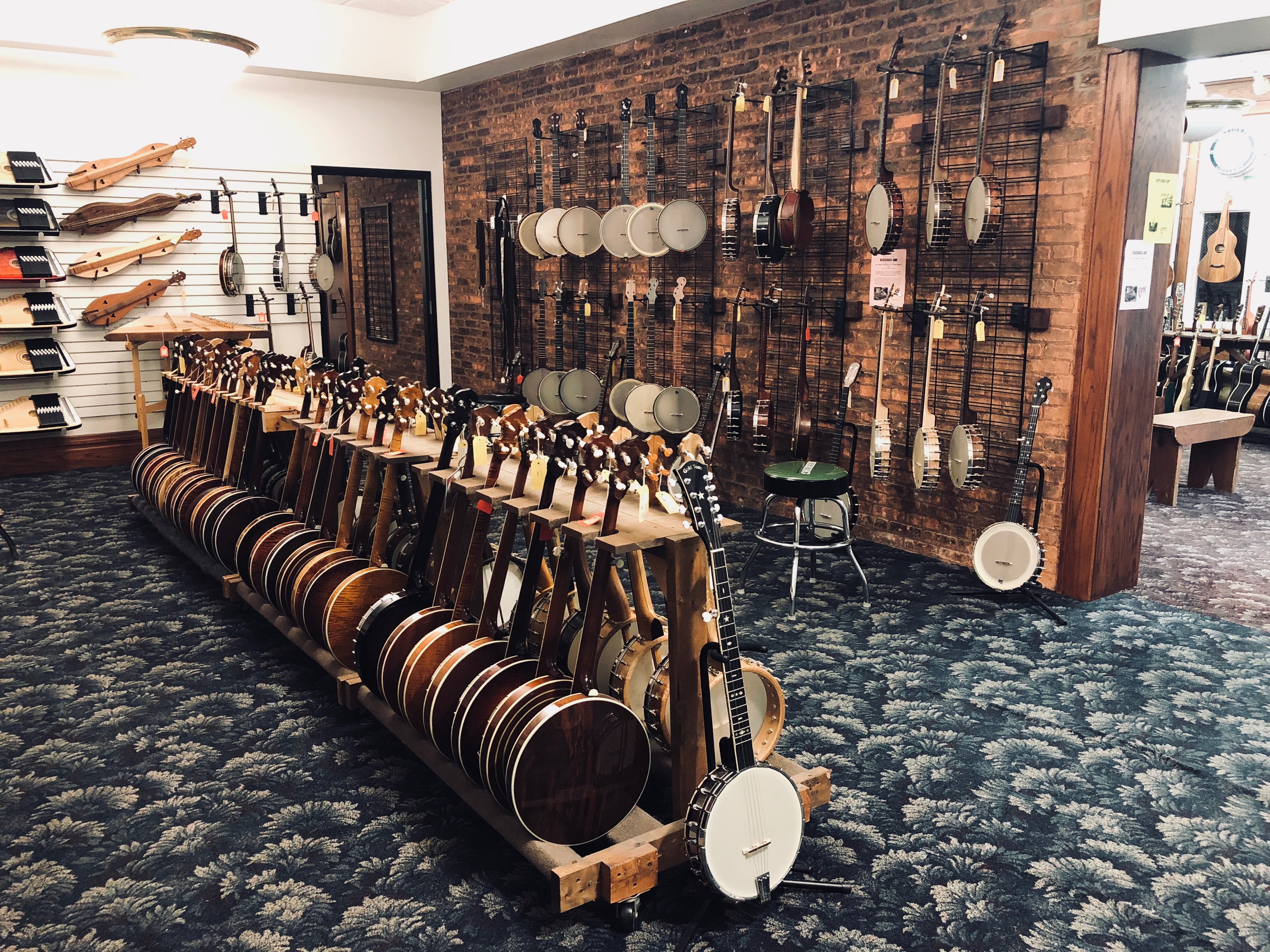So you’re thinking about buying a banjo.
Fantastic. So what should you be looking for? We have over 100 banjos in stock, with new instruments arriving every week. There is an unlimited number of variations -- sizes, types of wood/metal used, different types of hardware, etc. -- and it can be overwhelming to a banjo newbie.
So we’ve put together a list of five questions to ask yourself before starting your search. This should narrow down your options and, hopefully, make your decision a little easier. And of course, you can always call our helpful staff, and they’ll be happy to answer any lingering questions you might have.
Before we get any further, a word about quality. We stand by all the instruments we sell here, but there are some low-quality banjos out there on the market. Make sure that your banjo neck is made from a quality hardwood like maple or walnut and that the rim is made of a quality tonewood (usually maple) or metal. Wood rims can be either multi-ply or block style, but you don’t need to get too concerned about the differences this early in your banjourney. Some banjos, like the Gold Tone AC-1 and AC-2, use composite rims and are a good value. In any case, beware of deals that sound too good to be true.
With that out of the way, let’s get started.
1: How many strings are on a banjo?The most common banjo setup is five strings, tuned GDGBD, also known as open G tuning. There are other possible tunings, but we don’t need to get into that here. If you’re looking to play authentic bluegrass or old time music, you will want a 5-string banjo. But there are other options.
If you already play a stringed instrument, there are some types of banjos that can make the transition a little less daunting. If you’re a guitarist who’s interested in getting that banjo timbre but don’t want to worry about re-learning your chords and scales, there are many 6-string banjos on the market, and they are tuned just like a standard guitar. It’s a great way to add banjo tone to a song or two without learning an entirely new instrument.
If you play violin, viola, mandolin, or mandola, you may want to consider a 4-string tenor banjo, which are available with or without a resonator. The standard tenor banjo has a shorter neck, 17-fret or 19-fret, and is tuned CGDA, similar to a viola or mandola, but they can also be tuned in Irish tuning, GDAE, similar to a mandolin or violin. While violinists and violists will have to adjust to a fretted fingerboard and not playing under the chin, they will find that the notes are where their fingers are accustomed to finding them.
There are also 4-string plectrum banjos, which are played with a flatpick and traditionally used in Dixieland music and early jazz. Standard plectrum banjo tuning is CGBD, but they can also be tuned to Chicago tuning, which is DGBE. This is just like the highest four strings on a guitar, so it’s another option for banj-curious guitarists. And for ukulele players, there are a variety of 4-string banjo/uke hybrids on the market.
Tenor and plectrum banjos are less common, so you may have difficulty finding one in your price range, but they’re definitely worth considering if you’re transitioning from another instrument.
2: Resonator or openback?
To oversimplify the issue, resonator banjos are generally used for bluegrass and country music, and openback banjos are generally used in old time and folk. Resonator banjos have a bowl (resonator) on the back that reflects more of the sound out to the audience, which is helpful if you’re playing with a loud band or competing to be heard in a jam session. Typically they also have a heavy metal tone ring inside, contacting the head, which contributes to the volume and gives the tone a distinctive character. With openback banjos, on the other hand, much of that sound is absorbed by the performer, resulting in a mellower, more intimate tone. The playing style is typically different as well, with fingerpicking usually used in bluegrass or country and frailing or clawhammer used for old time and folk.
Of course, there’s no reason you can’t play any style of music on either style of banjo. You’ll find plenty of old time players who use resonator banjos, and modern amplification means openback players can hang just fine in a band. You’ll also find that many openback banjos have tone rings, which can color the sound and/or add volume. We suggest trying as many different banjos as you can to figure out what you like.
A note on setup: Openback banjos are sometimes set up with high action above the high end of the fretboard, giving more room for clawhammer playing. (Some even have a scooped fingerboard, without frets above a certain point, but we’ll get to that later.) If you plan to play high on the fingerboard, you’ll want to make sure your banjo is setup correctly for that. The strings should be low enough over the frets near the head to play comfortably.
 Banjos generally fall into two categories: Resonator (left) with a reflective bowl on the back, and Openback (right).
Banjos generally fall into two categories: Resonator (left) with a reflective bowl on the back, and Openback (right).
Most modern banjos use synthetic heads, which are resistant to weather and environmental factors, but some players still prefer the tone of traditional goat or calf skin heads. If this is your first banjo, stick to synthetic. You’ll have enough things to worry about; there’s no need to add a fussy skin head to the mix.
4: To scoop or not to scoop?Some openback banjos have a scooped fingerboard, where above a certain point there are no frets and material has been removed, or scooped, from the fingerboard. This creates more space between the strings and the fingerboard, giving you more room to play over the fretboard and take advantage of the cool sound you get in that spot. This is preferred by many clawhammer players. If you plan on playing lead runs or other types of playing that take you high up the fingerboard, however, the scoop is not a desirable option.
 Some openback banjos, like this Deering Goodtime Americana, feature a scooped fretboard for easier over-the-neck playing.
Some openback banjos, like this Deering Goodtime Americana, feature a scooped fretboard for easier over-the-neck playing.
Where are you going to be playing your instrument? If it’s mainly for playing around the house or in acoustic jam sessions, you will probably never need a pickup. If you’re going to be playing live at coffee houses, theaters, churches, or other medium to large venues, you might find a pickup will make amplification much easier than trusting the sound person to mic it up well. If you’re playing loud bars or clubs, you may want to consider a mostly solid body instrument, like the Gold Tone EB-5, which will be more resistant to feedback.
There are plenty of after-market pickups you can add to an instrument, so if you’re not sure if you need one right now, you can always pick one up down the road.
Anything else?While we’ve covered most of the biggest banjo buying concerns, we’ve only scratched the surface in terms of options. Some choices, like the type of wood used for the rim and the neck, can greatly affect the tone and/or feel of the banjo. Other choices, like fingerboard inlay, are almost entirely aesthetic, but also factor into the decision. We recommend trying as many banjos as you can. If you can make the trip to our famous showroom in Lansing, Michigan, we have hundreds of banjos that you can take for a test drive. If you can’t make it here in person, you can use our website to explore and focus your choices, or give us a call, and our helpful staff will be happy to help you find an instrument that suits your needs and budget.
Finally, don't stress too much about getting the perfect banjo right now. Your tastes and preferences will develop as you learn, and what works for you today might not be ideal down the road. Find something that you can learn on, and you can always trade it in later when it's time to upgrade. Good luck!
Questions? Contact us.
Browse our full banjo selection.

